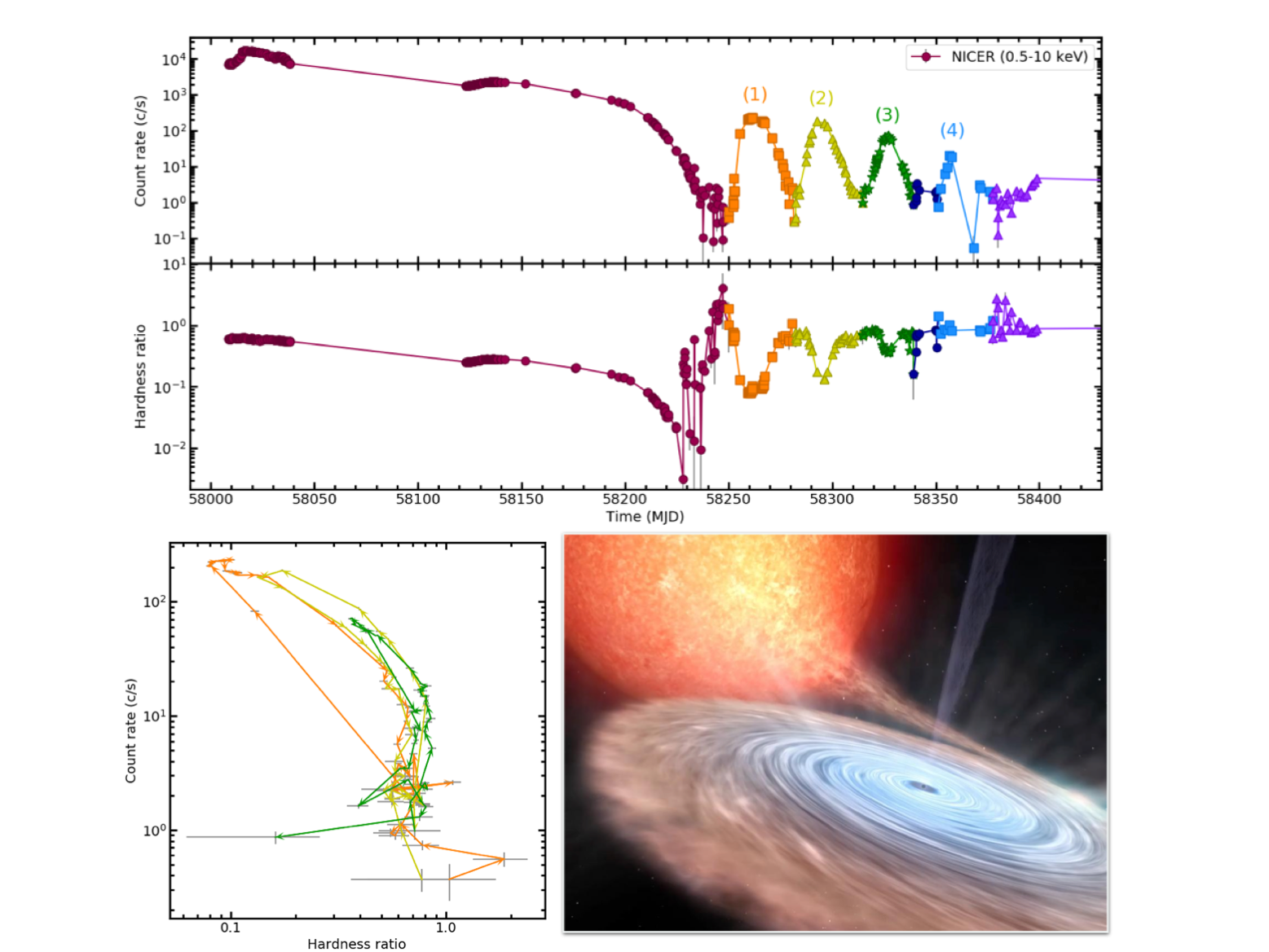NICER / ISS Science Nugget
for June 11, 2020
Paper examines link between outbursts and reflares in transient LMXBs
Transient low-mass X-ray binaries are composed of a low-mass star and a compact object (a neutron star or a black
hole) that draws matter from the low-mass star, forming an accretion disk. These sources are usually in a
quiescent state: the disk's inner edge is far from the compact object and little or no accretion occurs. On
timescales of anywhere between months and tens of years, the mass transfer rate increases and the system enters
what is called an outburst episode.
During an outburst the accreted mass reaches very high temperatures, therefore
emitting X-rays. The outbursts pass through different phases (known as states), with observed characteristics
depending on whether the outgoing flux is dominated by emission from the inner parts of the accretion disk, by the
so-called "corona" (a cloud of hot electrons surrounding the compact object), or by a mix of both. During the
decaying phase of the outburst, some sources exhibit what are known as "reflares" or "echo outbursts": small scale
outbursts that happen at more than two orders of magnitude lower luminosity.
In a paper led by Dr. Virginia Cúneo (Instituto de Astrofísica de Canarias, Tenerife, Spain) – recently accepted for
publication in Monthly Notices of the Royal Astronomical Society – we report on NICER observations of four reflares
observed at the end of the 2017 outburst of the black-hole X-ray binary MAXI J1535-571. We show that the system
evolved through the same types of accretion states during the reflares as it did in the main outburst; this
demonstrates that reflares are literally mini-outbursts, implying that the same accretion processes can happen
across two orders of magnitude difference in X-ray luminosity (and thus mass accretion rate). Indeed, our analysis
represents the lowest luminosity at which accretion state transitions have ever been studied in detail.

Figure:
Top panel: NICER light curve in the 0.5-10 keV band. Each data point corresponds to the average count rate of a
1-day data segment. Middle panel: Hardness evolution, defined as the ratio between the hard band (3-10 keV) and
the soft band (0.5-3 keV). Bottom left panel: Hardness-intensity diagram for the first three reflares; the colors
correspond to the reflares in the top panel. The hysteresis loops are a signature of state transitions. Bottom
right panel: Artistic representation of an accreting X-ray binary
(Link).
<< Previous
Main Index
Next >>